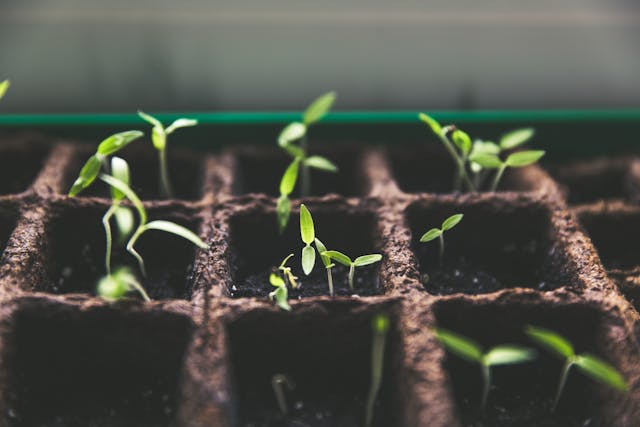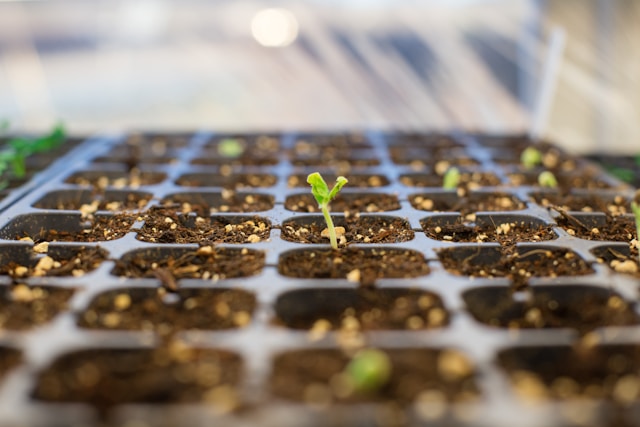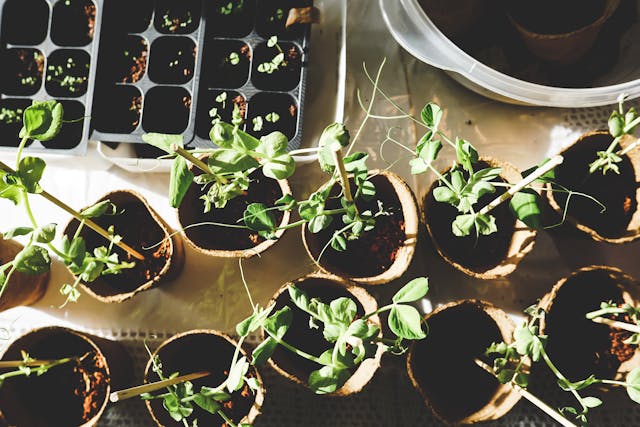Physical Address
304 North Cardinal St.
Dorchester Center, MA 02124
Physical Address
304 North Cardinal St.
Dorchester Center, MA 02124

Starting seeds indoors is an exciting and rewarding process, but it can also be tricky. Many gardeners, from beginners to seasoned pros, make common mistakes that hinder seed growth. By avoiding these pitfalls, you can give your plants the best possible start.
Watering is essential, but too much can drown your seeds. Overwatering leads to poor oxygen circulation, root rot, and fungal diseases like damping off. Instead of keeping the soil constantly wet, wait until the surface is almost dry before watering again. A well-draining seed-starting mix and containers with drainage holes help prevent excess moisture buildup.
On the flip side, not watering enough can be just as damaging. If seedlings dry out completely, they can shrivel and die. Keep an eye on soil moisture—if it looks dry, water lightly. If a plant starts wilting but hasn’t completely dried out, water immediately and move it out of direct light to help it recover.
Seedlings need plenty of light to grow strong and healthy. Relying on window light often results in weak, leggy plants. Instead, use grow lights or shop lights positioned just 1–2 inches above your seedlings for 14–16 hours a day. Adjust the height of the lights as plants grow to keep them close.
Many gardeners use humidity domes to help seeds germinate. However, once the first seedlings emerge, remove the lid to prevent mold growth and damping off. Keeping the dome on too long creates an overly humid environment, encouraging fungal diseases.
Seedlings don’t need much fertilizer at the beginning. Overfeeding can cause weak, leggy growth and even burn delicate roots. If using a commercial seed-starting mix, it likely has enough nutrients for the first few weeks. Once the first true leaves appear, apply a diluted liquid fertilizer every two weeks.

Hardening off is the process of gradually introducing seedlings to outdoor conditions before transplanting. Moving them outside too fast can result in sun scald and wind damage. Start with 30 minutes in a shaded area and gradually increase their exposure to sunlight and wind over 7–10 days.
Old seeds often have low germination rates. Before planting, check the seed packet for the expiration date. If you’re unsure, do a simple germination test by placing a few seeds in a damp paper towel inside a plastic bag. If less than 50% sprouts, it’s best to buy new seeds.
Seedlings that outgrow their starter trays must be transplanted into larger containers before they become root-bound. Signs that it’s time to pot up include slow growth, yellowing leaves, or roots circling inside the container. Moving them to a bigger pot with fresh soil ensures continued growth. You can avoid seed starting mistakes by following this technique.
Planting seeds too deep or too shallow can affect germination. Follow the recommended depth on the seed packet. If unsure, a general rule is to plant seeds at a depth about twice their size. Tiny seeds like lettuce should be surface sown, while larger seeds like beans need to be buried deeper.

Using containers without drainage can cause water to pool at the bottom, leading to root rot. If repurposing containers, be sure to poke holes in the bottom to allow excess water to escape. Always place trays or saucers underneath to catch any runoff.
It’s tempting to start seeds early, but if they grow too large before transplanting, they can become weak and stressed. Some plants, like tomatoes, can quickly outgrow their containers if started too soon. Check your region’s last frost date and follow recommended indoor start times to avoid overgrown seedlings.
Starting seeds successfully requires careful attention to watering, light, timing, and proper care. By avoiding these common seed starting mistakes, you’ll have stronger, healthier plants ready to thrive in your garden. Happy gardening from Sow Haven!